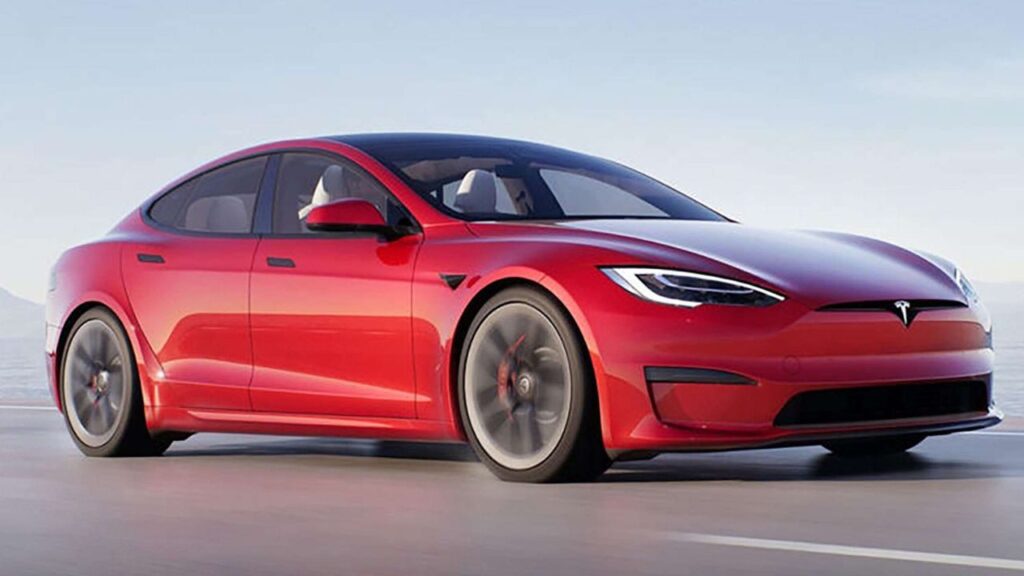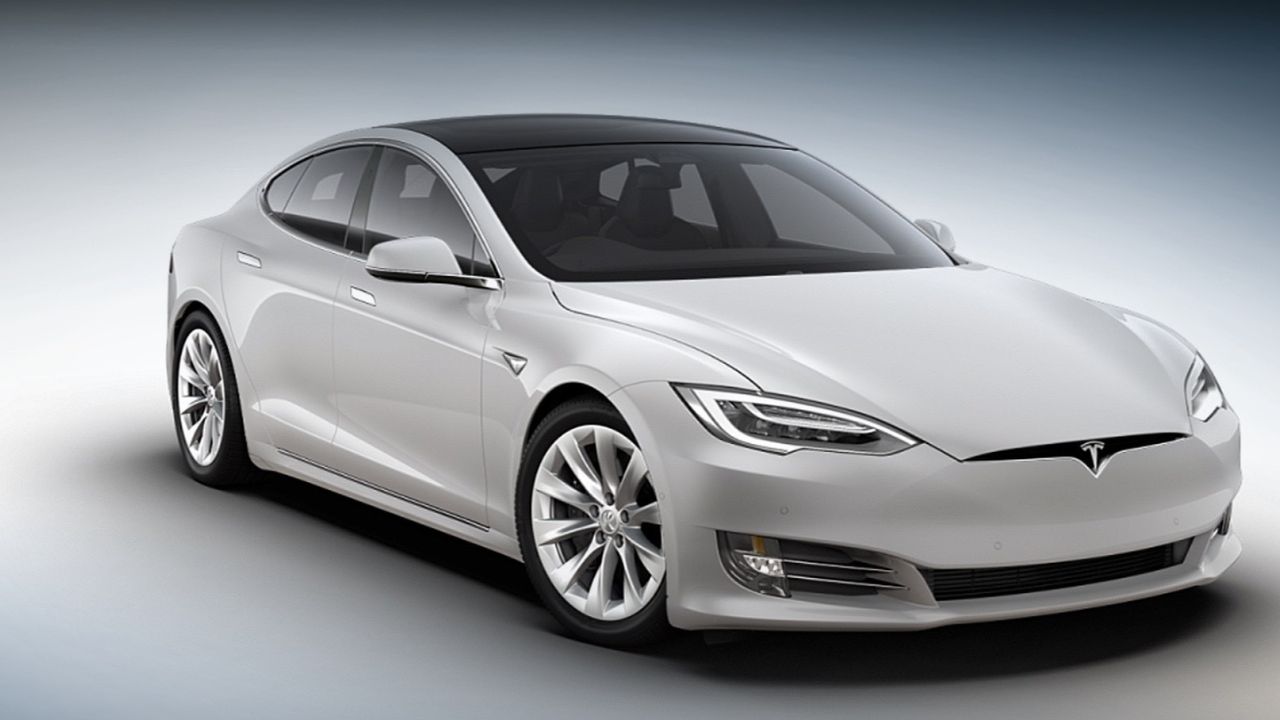tesla share price: Tesla, the name synonymous with electric vehicles (EVs), was once unrevealed in the American EV market, dominating with over 80% share. This remarkable reign, which helped define the modern electric car revolution, is now facing unprecedented challenges. According to recent data from Cox Automotive shared exclusively with Reuters, Tesla’s market share in the United States dropped to just 38% in August 2025 — the lowest point since October 2017, nearly eight years ago.
This significant decline is reshaping the competitive landscape and prompting analysts to rethink Tesla’s position, branding it more as a company repositioning itself away from the automotive business it once dominated. One notable industry expert bluntly summarised this transformation, stating, “When you are a car company and when you wan’t.” This clever wordplay captures Tesla’s evolving identity and the dilemma it faces as its grip on the EV market loosens.
Tesla’s Market Share Decline: Key Facts and Figures
Tesla’s market share fell from 48.7% in June to 42% in July, eventually plunging to 38% by August 2025. This steep decline is the largest downward move witnessed since March 2021, a point when Tesla’s sister competitors, such as Ford and General Motors, were aggressively launching new EV models. Despite a slight 3% sales increase in August to just over 53,000 vehicles, Tesla’s relative share of total U.S. EV sales continues to diminish amidst a rapidly growing market and an influx of competitive offerings.

What’s striking is how quickly Tesla’s dominance has wilted: from nearly 80% in early 2022, to just under 40% now. Alongside dwindling sales, Tesla’s profit margins have been squeezed, forcing the company to consider incentives and price cuts to retain buyer interest.
Read Also: Renault Kiger 2025: Launch, Updates, and Complete Specifications
Why This Decline? The Competition Catches Up
Tesla’s groundbreaking early advantage created a formidable lead, thanks to its innovative battery technology, software-centric updates, and the cult of personality surrounding CEO Elon Musk. However, the playing field has dramatically leveled.
Key competitors such as Hyundai, Kia, Ford, General Motors, Honda, Toyota, and Volkswagen have launched well-received and aggressively priced EVs. These automakers backed by decades of manufacturing expertise and vast dealership networks, have rolled out a broad range of models appealing to multiple buyer segments. Many of these competitors backed their products with lucrative sales incentives, pushing growth rates as high as 60% to 120% in July 2025 alone.
Moreover, Tesla’s lineup, primarily limited to the Model 3 sedan and Model Y crossover, has aged despite minor refreshes. While other companies expanded EV portfolios to include trucks, SUVs, and affordable urban vehicles, Tesla’s focus has shifted toward ambitious projects like robot-axis and humanoid robots, delaying newer affordable models that could attract mainstream buyers.
Tesla’s Strategic Pivot: More Than Just a Car Company?
Tesla’s transformation from a one-trick pony electric car maker to an ambitious AI and robotics company is a double-edged sword. On one side, the company’s visionary investments in technology hold potential for revolutionary breakthroughs beyond the automotive realm. On the other, Tesla risks eroding its core market by neglecting the fundamental need to refresh its automotive offerings regularly.
Analysts from Cox Automotive have noted, “I understand they’re positioning themselves as a robotics and AI company. However, when you’re primarily an automotive manufacturer without new offerings, your market share will inevitably decline.” With no major new vehicle launches slated for the near term and models like the Cybertruck falling short of sales expectations, Tesla’s declining EV sales reflect stagnation.
External Factors Influencing Tesla’s Market Share
Apart from product and competitive pressures, tesla share price has faced some public relations challenges. Elon Musk’s political affiliations and associations, including his advisory role to former President Donald Trump and controversial public statements, have affected brand perception among certain consumer groups. This polarization, coupled with macroeconomic uncertainties including shifting trade tariffs and inflationary pressures, complicates Tesla’s growth trajectory.
Nonetheless, the global push for electric vehicles continues to grow aggressively, with U.S. EV sales surging over 24% month-over-month in July to a record 128,000+ units. The looming expiration of federal tax credits, set at $7,500 per EV purchase, has been a significant market driver, prompting a rush among buyers to claim incentives before they phase out in September 2025.
What Analysts Say: The Car Company Quandary
Stephanie Valdez Streaty, Cox Automotive’s director of industry insights, provides an insightful summary of Tesla’s predicament: “The one constant in the automotive business is that fresh product sells well.” She emphasizes that despite Tesla’s historic lead and the strength of their software ecosystem, the lack of groundbreaking new vehicle models has opened the door for traditional automakers with fresh and more diverse EV portfolios.
Tesla’s dilemma is stark — should it double down as a car company with new affordable electric models to protect market share, or increasingly pivot to robotics, AI, and other futuristic ventures that may pay off in the longer term but risk immediate automotive relevance?
The Road Ahead for Tesla
tesla share price – path forward is complex. The company recently proposed a historic $1 trillion compensation package for Elon Musk, predicated in part on market cap growth to $8.5 trillion in the next decade. Still, automaker revenues remain currently reliant on their core automotive business.
Without a slew of competitively priced new EV models, Tesla faces pressure to maintain profitability either through volume gains driven by incentives or accepting margin erosions. Traditional manufacturers appear poised to continue capitalising on urgency in the market, particularly with high incentives and diversified offerings that meet varying consumer desires.
Consumer Perspective: A More Diverse Electric Vehicle Market
From a buyer’s standpoint, the decreased dominance of any single brand is often positive. A marketplace enriched with greater competition means:
- More choices in features, size, technology, and price points.
- Increased innovation prompted by expanding rivalries.
- Better after-sales networks and dealership support in traditionally underserved areas.
- Varied warranty, financing, and buyer incentive options.
While Tesla still commands a significant 38% slice, many American consumers are turning to brands like Hyundai, Ford, Kia, and GM due to attractive deals, wider availability, and newer models.
Read Also: Maharashtra Makes Atal Setu Toll-Free for Electric Vehicles: A Big Push Towards Green Mobility
Conclusion
Tesla’s decline to an eight-year low in U.S. market share reflects both the inevitable maturation of an industry once spearheaded by a single pioneering player and the strategic shifts underway within Tesla’s broader corporate ambitions.
This turning point underscores a harsh reality for Tesla as a car company—without fresh offerings and aggressive innovation in the EV space, its once-dominant market position is vulnerable. Yet, Tesla’s continued innovations in robotics and AI point to an identity flux, where it remains to be seen whether it will thrive as a pure automotive powerhouse or pioneer an entirely new category.
For now, tesla share price sits at the crossroads of “when you are a car company” and “when you wan’t,” navigating the complexities of evolving leadership in an electric-driven future.

1 thought on “Tesla’s US Market Share Hits 8-Year Low: “When You Are a Car Company and When You Wan’t,” Says Analyst”